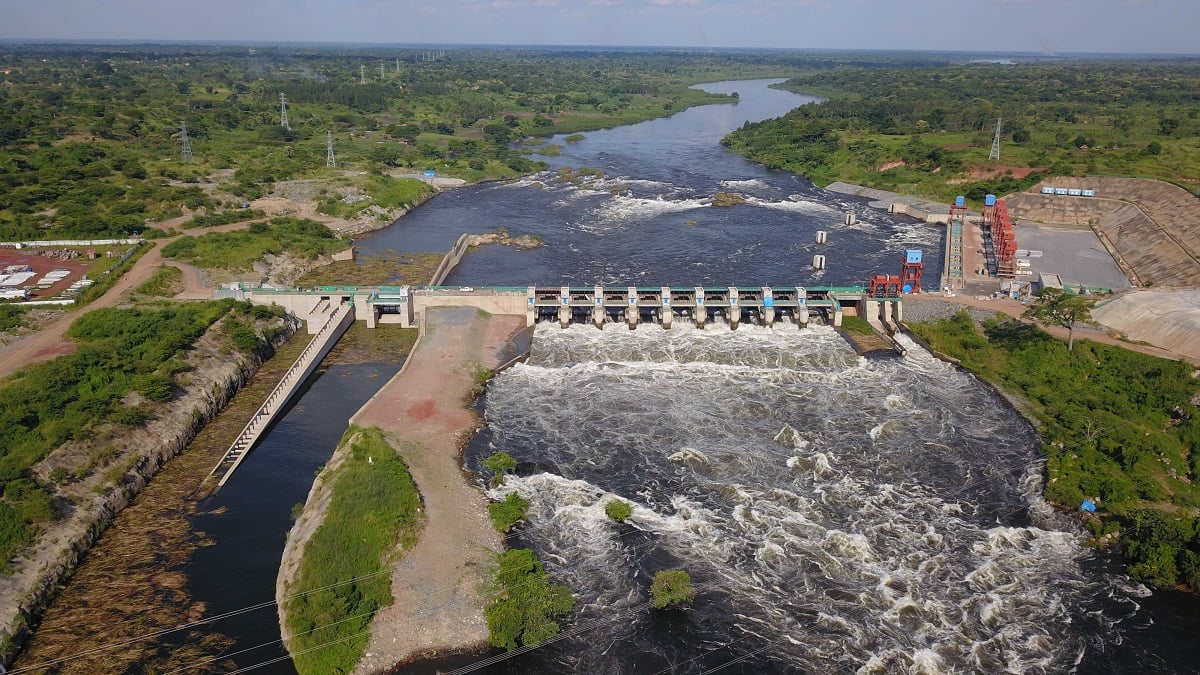Karuma Dam contractor gets all-clear sign

Officials from Uganda Electricity Generation Company Ltd and Sinohydro Corporation Company Ltd assess the progress of works at Karuma Hydropower Dam recently. PHOTO / TOBBIAS JOLLY OWINY
What you need to know:
- Ms Proscovia Njuki, the UEGCL board chairperson, at the weekend led a team of UEGCL and Sinohydro Ltd officials around the plant to assess the progress of works at the 600MW hydropower dam and ascertained that the project is ready for commissioning.
The government through the Uganda Electricity Generation Company Ltd (UEGCL) has cleared Sinohydro Corporation Company Ltd, the Chinese firm that was contracted to build Karuma Hydropower Dam, of any defects ahead of the project’s commissioning.
Daily Monitor has learned that Sinohydro has been cleared of both structural and technical defects, which rectification has in the past caused disagreements between the government and the contractor, leading to postponements of commissioning dates.
Ms Proscovia Njuki, the UEGCL board chairperson, at the weekend led a team of UEGCL and Sinohydro Ltd officials around the plant to assess the progress of works at the 600MW hydropower dam and ascertained that the project is ready for commissioning.
Mr Harrison Mutikanga, the UEGCL chief executive officer, said: “The new team of the contractor has done a commendable job and we are optimistic that, given the remaining few works, they will come up with an implementation plan for commissioning the plant.”
Dr Mutikanga added that one of the biggest challenges they faced with the contractor earlier on was cabling non-conformances “but the cables have been corrected, new cables were brought in, cabling trays, cabling cabinets and re-modifications have been made.”
Besides fixing all the electromechanical defects and installing circuit breakers and fire breakers for transformer protection, he said all the structural glitches have also been rectified.
Although he stated that the completion status of the dam remains at 99 percent, Dr Mutikanga said they have gone ahead to clear the contractor to prepare a commissioning plan.
He stated that they had in the past had disagreements with the contractor because they had messed up the set-up of the mechanical systems of the plant.
“We are appealing to Ugandans to be patient so that we can deliver for them a safe plant that is going to generate electricity reliably,’’ Dr Mutikanga said
Ms Njuki stated that the UEGCL management was convinced with the repairs conducted by the contractor and that the completion of the defect repairs grants the project ‘ready for commissioning’ status while final touches progress.
“The board is pleased with the level of commitment from the contractor to close the identified non-conformances towards completion of the Karuma Dam Project,” Ms Njuki said.
Mr Ding Zhengguo, the Sinohydro Corporation Ltd project manager, said they brought into the country a group of staff that were missing in the previous team.
“We discovered that almost all the challenges that delayed the work in the past were all quality-related. We have brought in a quality manager,” Mr Ding said.
“We are optimistic that this work will be completed within the international quality standards,’’ Mr Ding added.
Mr Herbert Byaruhanga, the UEGCL (Karuma Dam) project manager, said new cable trays, new cable routes, and proper stainless steel cable glands have been fixed inside the powerhouse, marking an end to defect rectifications.
Ms Njuki also led the board to inspect the progress of works for the Karuma Dam’s Community Development Action Program (CDAP) Phase I works at Diima Primary School, Kiryandongo District, which is at 93 percent in progress.
Background
For nearly three years, there has been a disagreement between UEGCL and Sinohydro Corporation Ltd over fixing defects cited in the plant. If not completed in a satisfactory manner, the safety and reliability of the power plant are put at great risk resulting in frequent plant downtime, maintenance problems, loss of generation revenue, and ultimately reduced durability, according to UEGCL.




